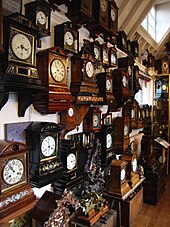
A museum is distinguished by a collection of often unique objects that forms the core of its activities for exhibitions, education, research, etc. This differentiates it from an archive or library, where the contents may be more paper-based, replaceable and less exhibition oriented, or a private collection of art formed by an individual, family or institution that may grant no public access. A museum normally has a collecting policy for new acquisitions, so only objects in certain categories and of a certain quality are accepted into the collection. The process by which an object is formally included in the collection is called accessioning and each object is given a unique accession number.

Museum collections, and archives in general, are normally catalogued in a collection catalogue, traditionally in a card index, but nowadays in a computerized database. Transferring collection catalogues onto computer-based media is a major undertaking for most museums. All new acquisitions are normally catalogued on a computer in modern museums, but there is typically a backlog of old catalogue entries to be computerized as time and funding allows.
A museum's permanent collection are assets that the museum owns and may display, although space and conservation requirements often mean that most of a collection is not on display. Museums often also host temporary exhibitions of works that may come all or partly from their permanent collection, or may be all or partly loaned (a "loan exhibition"). A travelling exhibition is shown in more than one venue; these tend to be either large loan exhibitions which may be exhibited at two or three venues in different countries, or selections from the collection of a large museum which tour to a number of regional museums.
